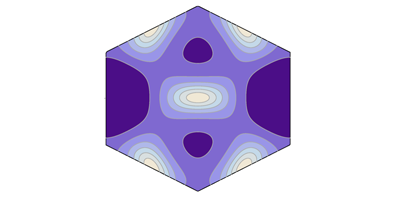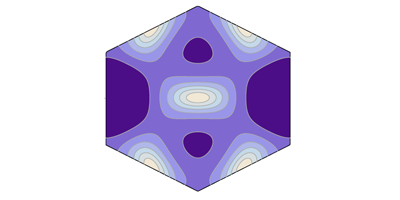Mapping the Topology of a Cold World
The properties of particles in periodic potentials are determined not only by the energy-band structure but also by the topology of the eigenstates in the bands. Following a closed trajectory in momentum space within the Brillouin zone, a particle may acquire a Berry phase that is the integral of the Berry curvature over the surface bounded by the contour. The periodicity of the lattice requires that the integral over the entire Brillouin zone is quantized, which implies the existence of topological invariants underlying the behavior of the system.
In a paper appearing in Physical Review A, Hannah Price and Nigel Cooper at the University of Cambridge, UK, propose a new protocol for mapping the local Berry curvature in ultracold gas experiments. The idea consists of adiabatically moving an atomic wave packet in a two-dimensional lattice subjected to an external force. Even though the trajectory in real-space is very complicated, the path in momentum space can be traced and, most importantly, the force can be cleverly managed in such a way to measure the effect of the Berry curvature at each point in the Brillouin zone.
Price and Cooper show how their protocol is expected to work in the case of an asymmetric hexagonal lattice and in the so-called “optical flux lattices,” where the atoms feel an artificial magnetic field with high flux density. They also provide concrete arguments about the feasibility of experiments with the state-of-the-art techniques. A successful program in this direction could eventually open new perspectives in the study of quantum Hall physics in ultracold gases and, more generally, of topological effects in the dynamics of matter waves. – Franco Dalfovo





